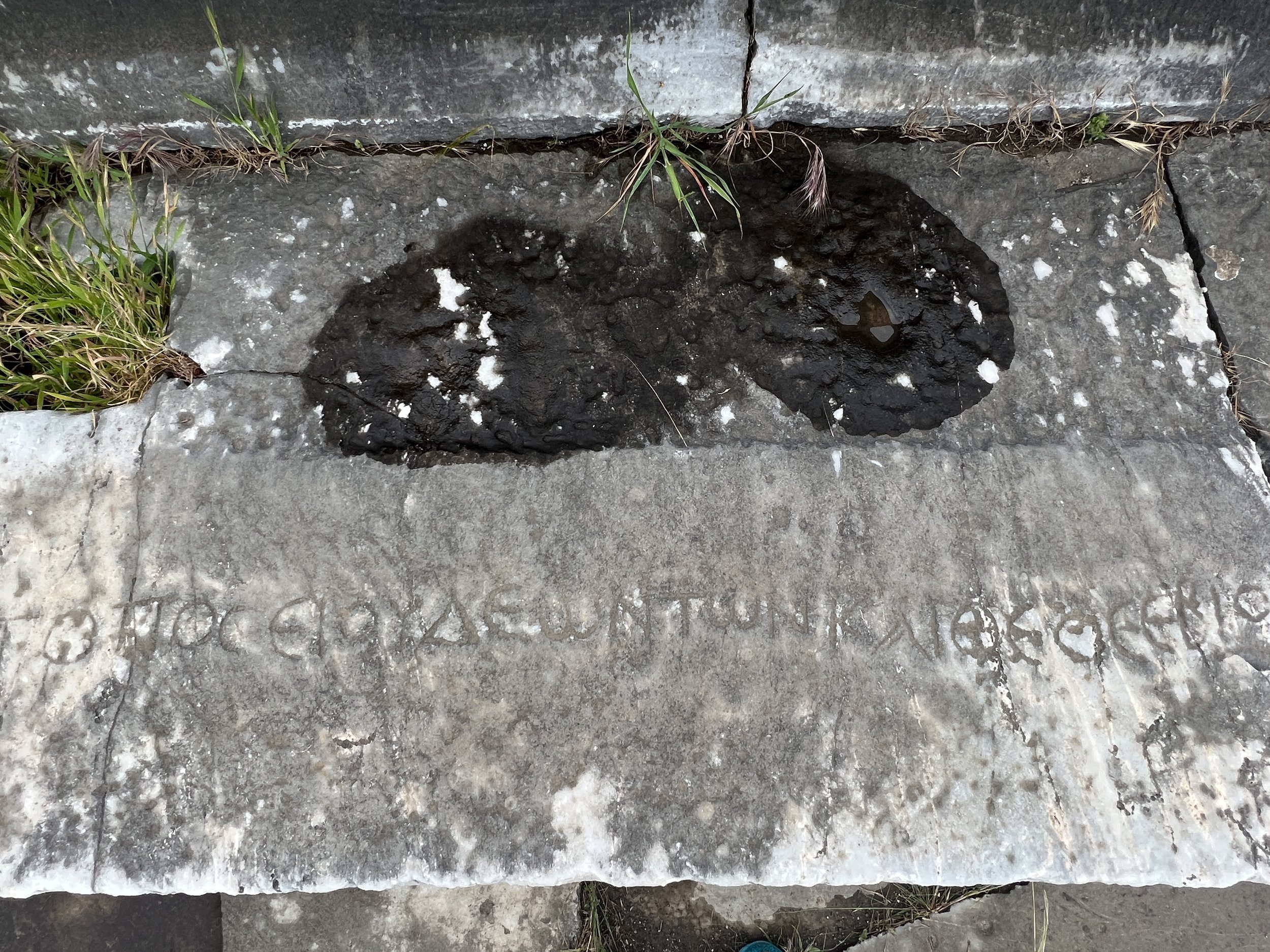Miletus
May 4, 2023
Ok, it’s time for pictures of dogs and cats, the communal pets of Turkish cities and apparently archeological parks! All friendly and well cared for by their community!
Our day started at Miletus. Paul had sent for the elders of Ephesus to meet him in Miletus, a port stop on his way back to Jerusalem at the end of his third missionary journey. Paul knew that trouble and imprisonment were likely waiting for him. He gave a final speech to the elders cautioning them to remain true to what he had taught them about Jesus.
The site is only somewhat excavated, and has just as much thistles and sheep poop as we remember, plus some bulls and cows! The theater is stunning. There is a seat with a Greek inscription that says something along the lines of “reserved for the God fearers” which would refer to Jews and Christians. There are remains of the harbor structures as this was once close to the sea. Some Christian symbols can be found carved in stones around the ruins of a Byzantine era basilica. In the ruins of a temple to the Egyptian god Serapis there is also a carving of the Roman god Helios. One of the Roman baths has a statue of a reclining man who represents the Meander River god. All aspects of a pagan Roman city on full display! Many thanks to fellow travelers Carol and Vanessa who don’t stop until we’ve seen everything and are always game to high tail it back to something we missed at the last moment - we haven’t delayed the bus yet but it’s a near thing every time
Next we stopped to look at one of the aqueducts that carried water from the surrounding mountains into the city of Laodicea. Laodicea is one of 3 Lycus valley cities mentioned in the Bible. In Paul’s day the valley contained a huge lake, now dried up, and there were many smaller cities around the lake. Laodicea was rich, a center for textile production traded on the Silk Road- still a wealthy area and known for textiles today. Revelation cautions that this church is neither hot or cold , but lukewarm and to be spit out. They had compromised their faith to remain part of this wealthy culture. Some think the hot/cold reference would have resonated with the church because they had a cold water source coming from the mountains near Colossae and hot spring water coming from hieropolis.
Laodicea archeological site contains one of the earliest churches - a building constructed specifically for this purpose, 4th century construction, and an even earlier peristyle Roman house that has clear evidence of having been used as a house church. Mosaics, apses visible in both places. A very early baptistery visible in the church. The site is also a very peaceful and beautiful place - surrounded by mountains, wide open spaces, and gorgeous reconstructions. There are two massive theaters - one reconstructed and the other in its natural ruined state. This city, like most of the biblical cities we are seeing, suffered from serious damage by earthquakes in antiquity and was eventually abandoned.
We are staying the night in the Lycus valley near the white mineral hills of Pamukkali. There are travertine pools and cliffs created by the mineral springs. At the top of these is the huge archeological site of Hieropolis which we will see tomorrow.

Monumental agora gate, Miletus



































































